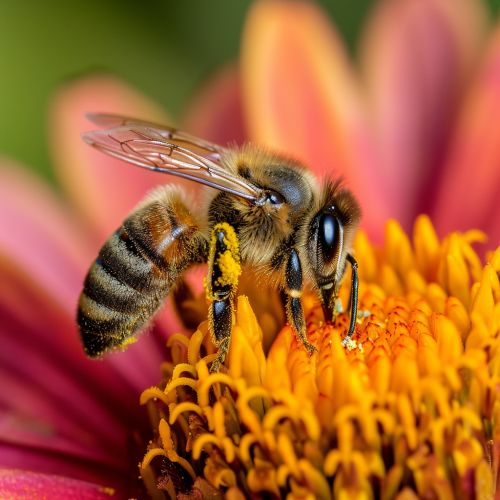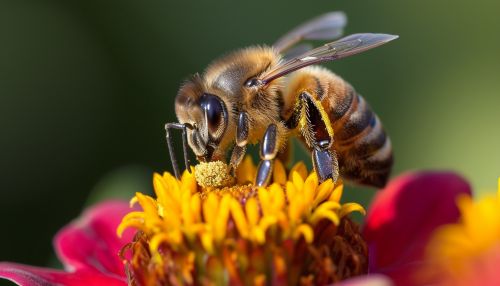Pollination ecology
Introduction
Pollination ecology is a branch of ecology that studies the interactions between plants and their pollinators. It is a critical field of study as it provides insight into the processes that drive plant reproduction, biodiversity, and ecosystem health.
Pollination
Pollination is the process by which pollen is transferred from the male parts of a flower (the anthers) to the female part (the stigma) of the same or another flower. This process is crucial for the fertilization of plants, leading to the production of seeds and the continuation of plant species.


Types of Pollination
There are two primary types of pollination: self-pollination and cross-pollination.
Self-Pollination
In self-pollination, pollen is transferred from the anther to the stigma of the same flower or to another flower on the same plant. This type of pollination does not require a pollinator, as the plant can fertilize itself.
Cross-Pollination
Cross-pollination involves the transfer of pollen from the anther of one flower to the stigma of another flower on a different plant of the same species. This type of pollination requires a pollinator to move the pollen.
Pollinators
Pollinators are animals or environmental factors that move pollen from the male anthers of a flower to the female stigma. The most common pollinators are insects, but other animals like birds and bats, as well as wind and water, can also serve as pollinators.
Insect Pollinators
Insects such as bees, butterflies, moths, beetles, and flies are among the most common pollinators. These insect pollinators visit flowers to feed on nectar or pollen, and in the process, they transfer pollen from one flower to another.
Bird and Bat Pollinators
Birds, particularly hummingbirds, and bats are also important pollinators. These bird and bat pollinators typically feed on nectar and inadvertently carry pollen on their bodies from one flower to another.
Wind and Water Pollinators
Some plants rely on wind and water for pollination. These wind and water pollinators carry pollen from one plant to another without the need for an animal intermediary.
Pollination Syndromes
Pollination syndromes are sets of flower characteristics that have evolved in response to natural selection imposed by different pollen vectors, which can be abiotic (wind and water) or biotic (animals).
Pollination and Biodiversity
Pollination plays a critical role in maintaining biodiversity. It enables plant reproduction, leading to a diverse array of plant species. This plant diversity, in turn, supports a wide range of animal species that rely on plants for food and habitat.
Pollination and Ecosystem Health
Pollination is also crucial for ecosystem health. Healthy ecosystems rely on plant diversity, which is facilitated by pollination. Moreover, many of the world's crops depend on pollinators, making pollination essential for global food security.
Threats to Pollination
Several factors threaten pollination, including habitat loss, climate change, and the use of pesticides. These threats can lead to a decline in pollinator populations, which can have severe consequences for plant reproduction and biodiversity.
Conservation of Pollinators
Efforts to conserve pollinators are vital for maintaining healthy ecosystems and food security. These efforts include creating pollinator-friendly habitats, reducing the use of pesticides, and conducting research to better understand pollinators and their needs.
